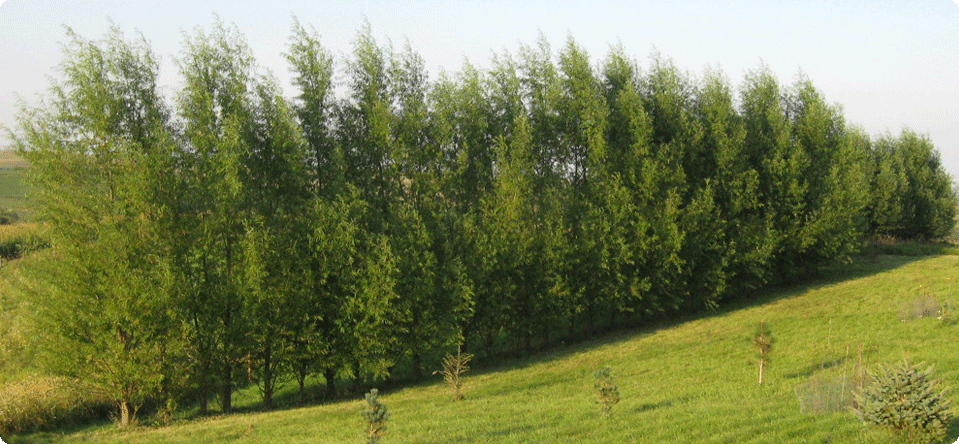





Bigfoot Hybrid Willows grow so fast that leaves start getting shaded out quickly. These leaves rapidly turn yellow and soon will fall off the tree, as they are no longer efficient and aren't needed. But there are other reasons hybrid willow leaves can turn yellow and those reasons can be a problem.
When Bigfoot Willow Hybrids are planted in sod and not watered and mulched often enough while getting established, this fast growing tree will give you warning signs to water the tree more. The leaves will start turning yellow and if never given proper moisture to counteract this problem, this hybrid tree may die. The lack of water is the main reason that yellowing of willow hybrid leaves happen.
The other reasons why yellow leaves may appear is because of soil issues. Since the Bigfoot Willow is such a quick growing tree, this hybrid may need to be fertilized to sustain this rapid rate of growth. I would suggest to fertilize with a high nitrogen fertilizer to green up your tree and speed up the growth. Even though this hybrid willow is adaptable to most soil conditions and if you have done everything else, but this tree is still suffering from yellow leaves, then the tree may be suffering from iron chlorosis. This can be easily be remedied with iron treatments.
No, the Bigfoot Willow Hybrid is a male, so does not cause this problem. Other fast growing trees like female hybrid poplars do have that problem.
NO, Large trees in general, especially fast growing floodplain trees (willow, poplar, maple, and ash) that seek out moisture, should be planted at least 100' away. Some people that have planted trees closer and don't want septic problems from roots have utilized copper-based products that they flush through their septic system, and it supposedly kills any roots making their way into the system.
The Bigfoot Willow hybrid or any large tree should not be planted close to the house. It may cause problems later down the road. It is usually suggested that large fast growing trees be planted at least 40' from your house.
Native willows are not the same as the Bigfoot hybrid willow. This willow hybrid clone was specifically selected for certain uses such as windbreaks; therefore, it will outperform and grow faster than any of the native willow seedlings that grow in your area.
Find out what is attacking them and proceed to utilize what method works best against that specific animal. Some common animals could be deer, rabbits, voles, mice, and beavers.
As you can see in the photo below, these fast growing hybrid trees can handle more moisture than about any other tree. In the photo, the willow cutting was planted in 7 feet of pond water and persisted there for 2 years. So even in a prolonged flood, they will survive and continue to grow. Overwatering is not possible with the Bigfoot Hybrid Willow, more water equals more growth.